Summary of Climate Disasters on the planet from July 24 to July 30, 2024
Chelyabinsk Region
Starting from July 25, the Southern Urals has been in the epicenter of severe weather. A Caspian cyclone brought anomalous rains, hail, and gusty winds with speeds of up to 25 m/s (56 mph).
In the Chelyabinsk region, in just three days, from July 25 to 27, precipitation exceeded the two-month average. This led to increased water inflow in rivers throughout the region.
On the evening of July 26, the dam at Kialim reservoir broke. Water surged through a 100-meter (328 ft) breach into nearby settlements.
The water flowed with such force that people could not open doors and windows in their homes. Many sought refuge on rooftops.
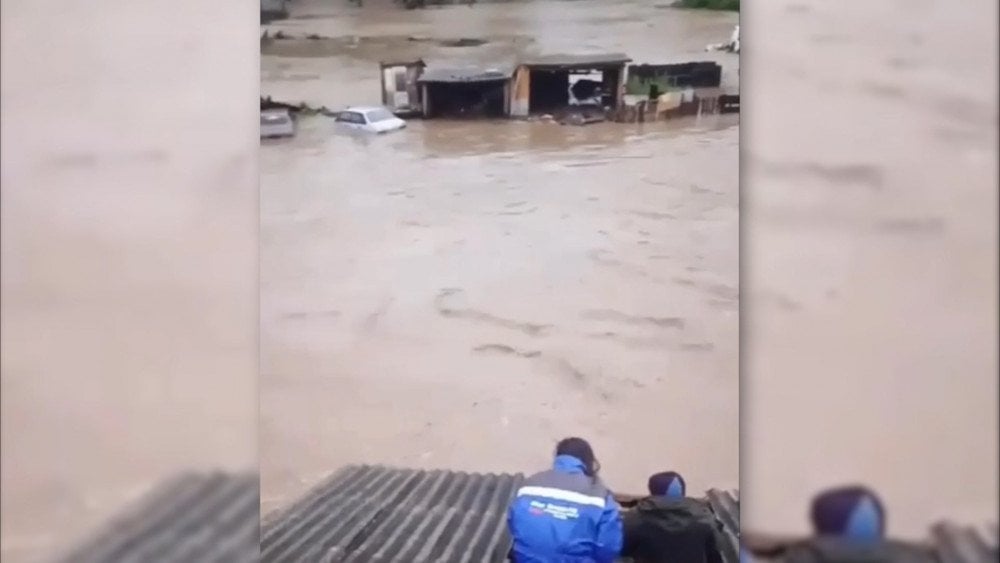
People seeking refuge from the flood on the roof of a house, Chelyabinsk region, Russia
In the village of Kiolim, water swept away a two-story house with people inside, dragging it about half a kilometer (0.31 miles). The house did not stop until it reached the forest and got stuck in the trees.
Due to the dam breach, the Kialim reservoir, which supplies drinking water to the entire Karabash district,
was literally drained.
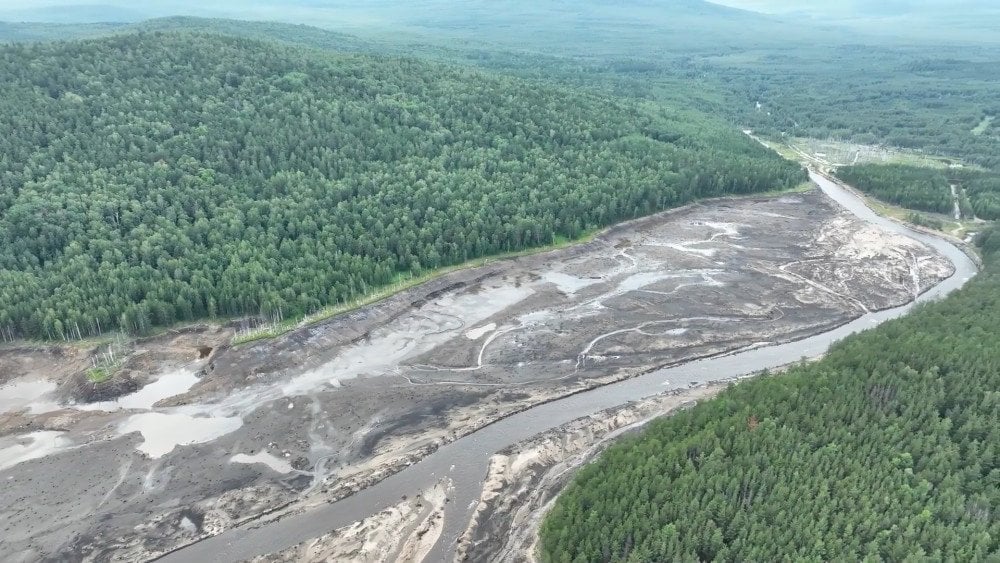
Due to the dam breach, the Kialim Reservoir was literally drained, Chelyabinsk region, Russia
Later on, another dam in the Yetkul district failed under the pressure of the water.
Parts of highways were temporarily closed, as bridges in the region were destroyed. The city of Korkino had no water and electricity for three days.
A state of emergency was declared in several districts of the Chelyabinsk region. Thousands of people were evacuated, and two people died.
In the city of Chelyabinsk, over two days, from July 25 to 26, 82 mm (3.2 inches) of rain fell, which is comparable to the monthly average.
The Miass River, which runs through the city, overflowed its banks and flooded several districts. A temporary shelter was organized for residents whose homes were affected by the flood.
Just a few days later, on July 31, the city experienced a weather apocalypse. This is how local residents described hurricane-force winds, incredibly powerful rain, and hail, which caused enormous damage to the city in a matter of minutes. Trees and outdoor structures were broken, roofs torn off houses, and windows shattered.
Republic of Bashkortostan
Starting from July 26, rains and thunderstorms hit Bashkortostan. Three districts, Abzelilovsky, Beloretsky, and Uchaly suffered the most.
In the local rivers Ai, Sim, and Belaya, the water level rose dramatically in just 24 hours.
In 23 settlements, homes and yards were flooded; people had to be evacuated.
In mountainous areas, the rain floodwaters
damaged 18 bridges.
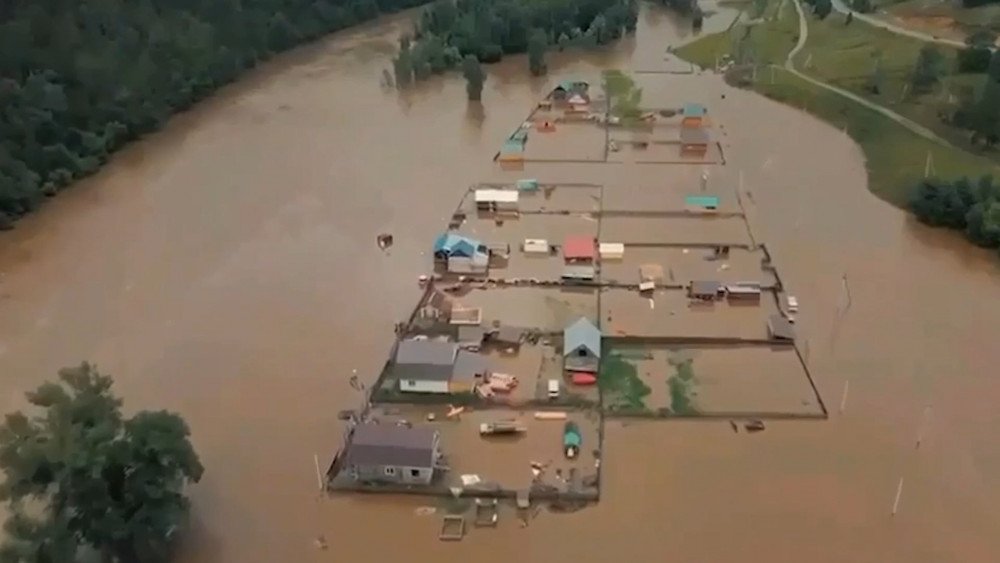
Flooded houses and yards, Republic of Bashkortostan, Russia
In the Uchaly district, more than 30 km (18.6 miles) of roads were drowned. As a result, the villages of Sharipovo, Aznashevo, Kazhaevo, and Suramanovo were cut off from civilization. Some settlements could only be reached by all-terrain vehicles. Others had to use boats and rope crossings.
The Bashkir Shulgan-Tash nature reserve and the Iremel nature park were completely closed for tourists.
Authorities stated that the region had not seen such serious infrastructure damage for at least 20 or 30 years.
Bezymianny Volcano
On July 24, one of the world's most active volcanoes, Bezymyannyi, in Kamchatka, threw out a column of ash to a height of 5 km above sea level. The next day it burst out in an explosive eruption.
The ash column rose to a height of 12 km (7.5 miles).
A powerful pyroclastic flow (a mixture of hot volcanic gasses, ash, and rock fragments) fell down the slopes of the volcano.
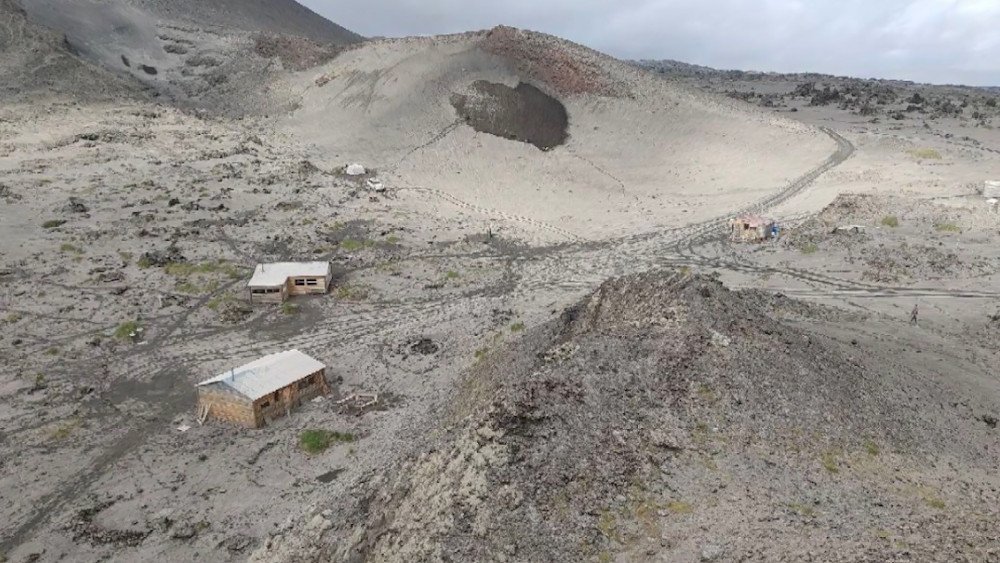
Bezymianny volcano covered nearby areas with ash, Kamchatka, Russia
The ash plume stretched almost 926 km (575 miles) to the southeast. Abrasive particles of volcanic ash are dangerous for all types of aircraft flying over Kamchatka on local and international routes.
A red aviation danger code was issued for Bezymianny.
Chukotka
In Chukotka, the flood emergency has led to a real disaster.
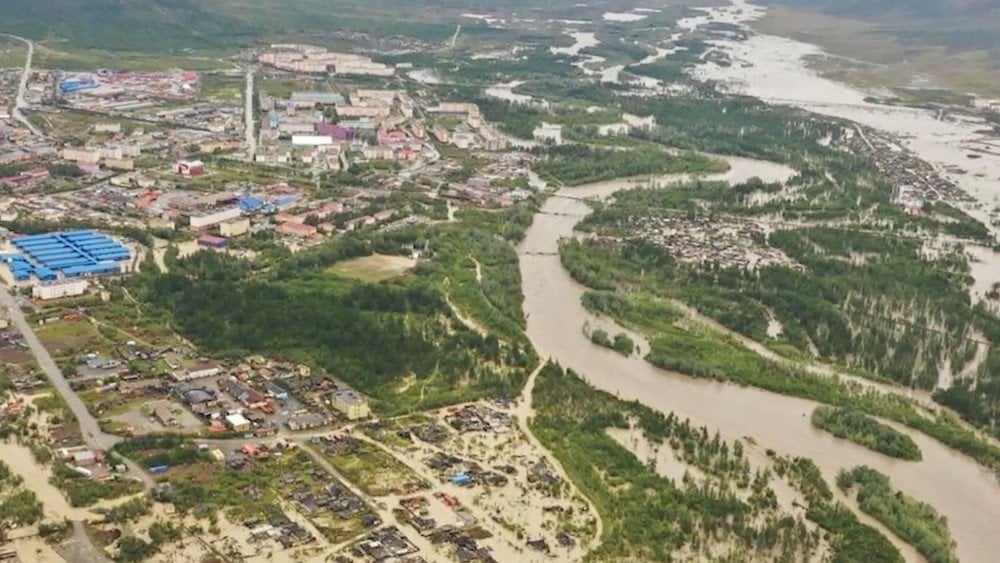
Catastrophic flood in Bilibino, Chukotka, Russia
The flood caused courtyards and the first floors of houses to drown. Even vehicles with passengers were swept away by the current. On July 25, the Karalveem River overflowed its banks due to heavy rains, inundating houses and roads. In Bilibino district, a state of emergency was declared, and 52 people were evacuated.
In the town of Bilibino people learned about the flooding after it already happened. The residents did not receive SMS or warnings. The town was flooded entirely; roads were blocked, and people couldn't go to work. Employees of the Bilibino Nuclear Power Plant (BiNPP), who could not miss their shift, had to use KamAZ trucks to get to work, but even they got stuck due to the high water level.
Old residents of the city note that this has never happened before.
Anomalous Rainfall
The city of Severo-Kurilsk experienced unusually heavy rainfall for 4 consecutive days, from July 23 to 26. As a result, 418 mm (16.5 inches) of rain fell, which is 2.5 times above the monthly norm (the average monthly norm for July is 160 mm or 6.3 inches).
And on July 24, when 187 mm (7.4 inches) of rain fell, the single-day rainfall record was broken.
On July 26, the village of Verkhny Ulkhun in the Zabaykalsky Krai, saw 57 mm (2.2 inches) of rain, which is more than half of the monthly norm (the average monthly norm for July is 82 mm or 3.2 inches).
Record rainfall also occurred in Buryatia.
According to the Hydrometeorological Center of Russia, in some areas, up to 75 mm (3 inches) of rainfall was recorded.

Record rainfall in Buryatia, Russia
On July 30, in Buryatia, a tornado was spotted near the village of Bichura.
In Kurgan, a historic precipitation record was broken. On July 26, the city received 56 mm (2.2 inches) of rain, making it a single-day record since 1940.
Meanwhile, the Omsk region received more than the monthly average of precipitation of 82 mm (3.2 inches) (the average monthly norm for July in the Omsk region is 44-72 mm or 1.7-2.8 inches).
Western Siberia
On July 28 and 29, after an anomalous heatwave, powerful storms with heavy rain, wind, and hail hit the regions of Western Siberia.
On July 28, in the city of Barnaul in the Altai Krai, the rainfall was short but very intense. The storm caused extensive damage: winds uprooted trees and toppled a tower crane.
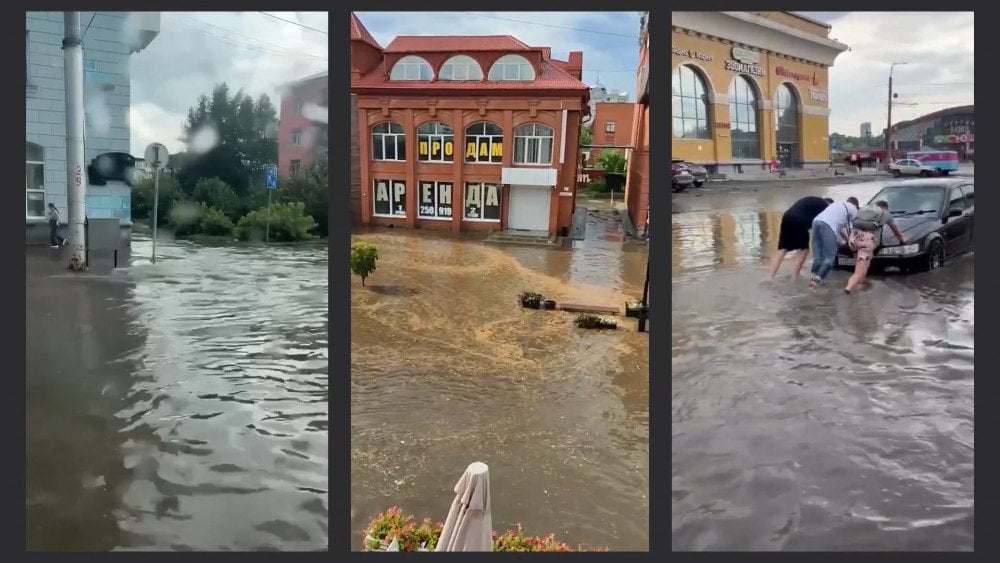
Flooded streets in Barnaul, Russia
In the Novosibirsk region, a storm with wind speeds up to 23 m/s (51.5 mph) left more than 25,000 residents without electricity.
In the Kochenevsky and Tatarsky regions, the wind damaged the roofs of residential homes.
In Novosibirsk, the bad weather lasted only 30 minutes, but it was enough to uproot trees, break cables, and damage cars.
The gusty wind was so strong that it tore out a window frame from the wall and ripped off a balcony, dropping debris onto cars parked below. The heavy rain reduced visibility to almost zero.
In the morning, due to heavy fog, more than 40 flights were delayed at Tolmachevo Airport.
Yakutia
The fire hazard season of 2024 in Yakutia has become one of the most challenging over many decades due to early thunderstorms and anomalously high temperatures. Since July 1, a federal state of emergency was declared in the region.
According to the head of the Republic, 95% of the wildfires burning in the region this year were caused by natural phenomena. In many areas, there has been no rain for 1.5 or 2 months.
According to regional authorities, as of July 29, there were 138 wildfires burning in Yakutia.
The area ravaged by fire exceeded 1 million hectares (2.47 million acres). Smoke from the fires traveled hundreds of kilometers. 60 settlements were affected by the smoke. Residents in the areas affected by the smoke complained about the poor air quality.
As of July 29, more than 20 fires approached settlements, being only 15 km (9.3 miles) away.
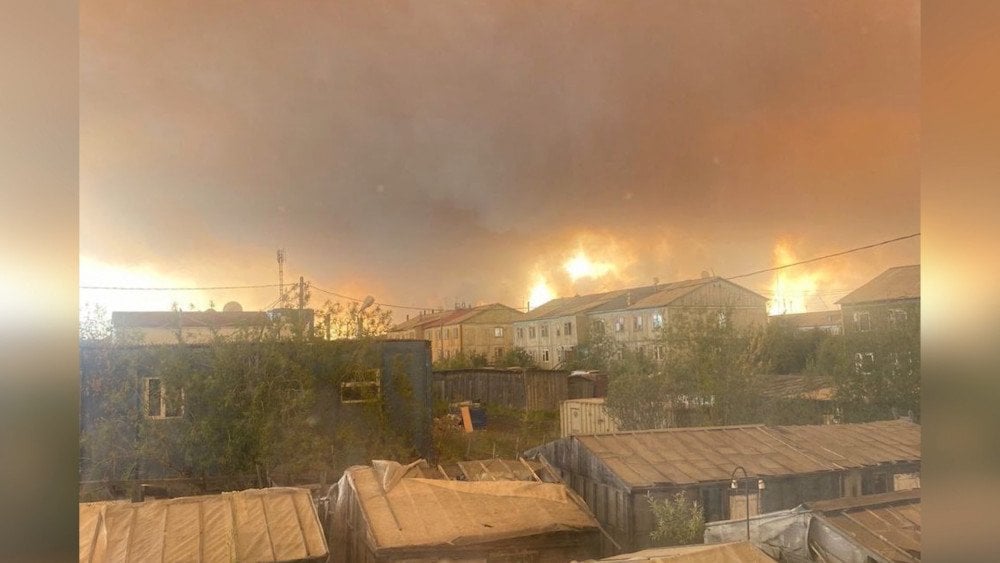
The fire approached very close to a settlement, Yakutia, Russia
Republic of Dagestan
After heavy rains on July 28 in Dagestan, five mountain rivers — Samur, Chirakhchai, Gyulgerichai, Akhtychai, and Kazikumukhskoye Koysu — overflowed their banks. The water swept away everything in its path.
Bridges, roads, and houses were washed away. 17 settlements were cut from transport services.
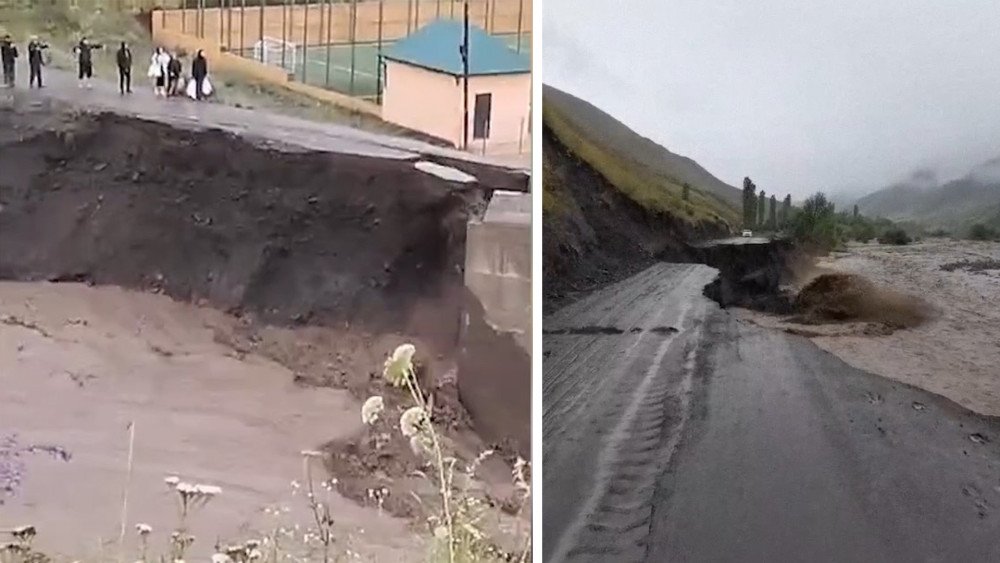
Heavy rains destroyed roads in the Republic of Dagestan, Russia
On the highway between the settlements of Mikik and Dzhinykh in the Rutulsky district, a mudslide occurred.
People widely complained about water supply issues: water was either not available or mud was coming out of the tap. Due to power grid accidents, 62,000 people in 130 settlements had no power.
In the Laksky district of Dagestan, due to rain and hail, a house collapsed, and about 100 cows fell from a slope and died.
Moscow Region
On July 28, in Patriot Park, Moscow region, one person died from a lightning strike, and three others who were close by, were hospitalized.
Volgograd Region
Large hail, strong wind, and rain hit the Volgograd region. The Nikolaevsky, Bykovsky, and Kamyshinsky districts suffered the most.
On July 30, hailstones the size of plums caused severe damage to watermelon crops. Some farmers lost their entire harvest on hundreds of hectares.

Large hail destroyed watermelons in the Volgograd region, Russia
Republic of Tatarstan
On July 30, severe weather hit the Republic of Tatarstan. The city of Kazan suffered from a downpour with hail. The storm lasted only 15 minutes, but it left icy rivers and hail drifts on the streets.
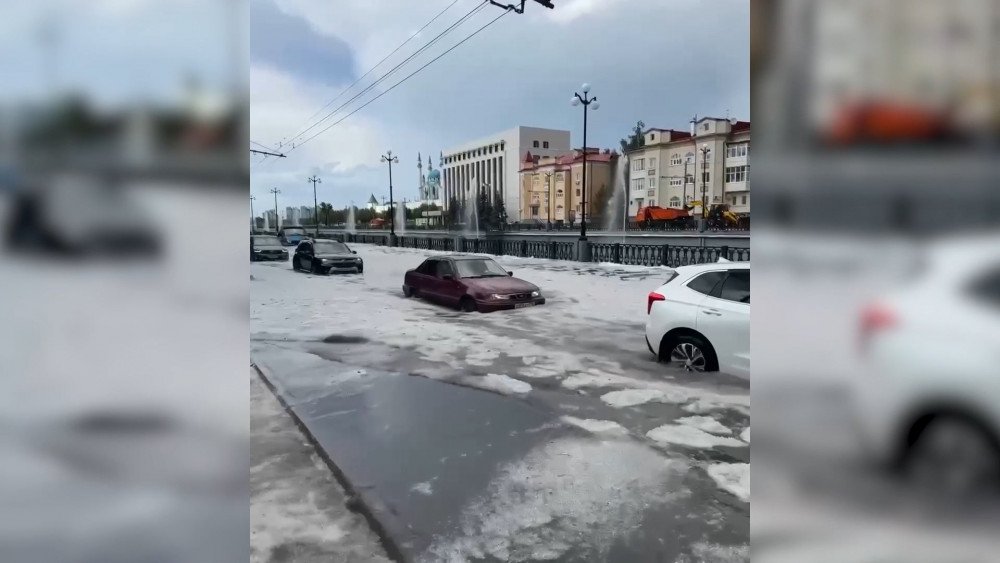
A heavy downpour with hail flooded Kazan, Republic of Tatarstan, Russia
On the same day, Begishevo Airport in the city of Nizhnekamsk was hit by a tornado (according to the classification by the Russian Hydrometeorological Center, a tornado is also defined as a whirlwind).
It literally scattered planes and helicopters on the runway, and damaged a fuel truck, three buses, hangars, and an administrative building of the airport. Two people were injured.
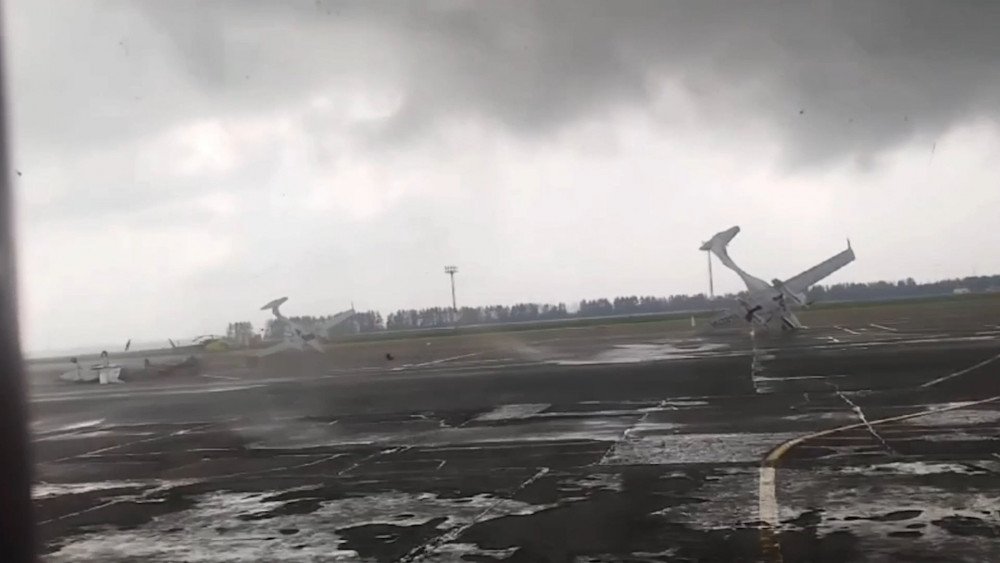
Tornado scatters planes at Begishevo Airport, Nizhnekamsk, Republic of Tatarstan, Russia
Republic of Karelia
Another dam failed to withstand the onslaught of water this week. On July 29, an accident occurred on the White Sea-Baltic Canal in the Republic of Karelia.
In the Segezha district, the failure of a cofferdam between floodgates released an uncontrolled flow of water that rushed into nearby settlements.
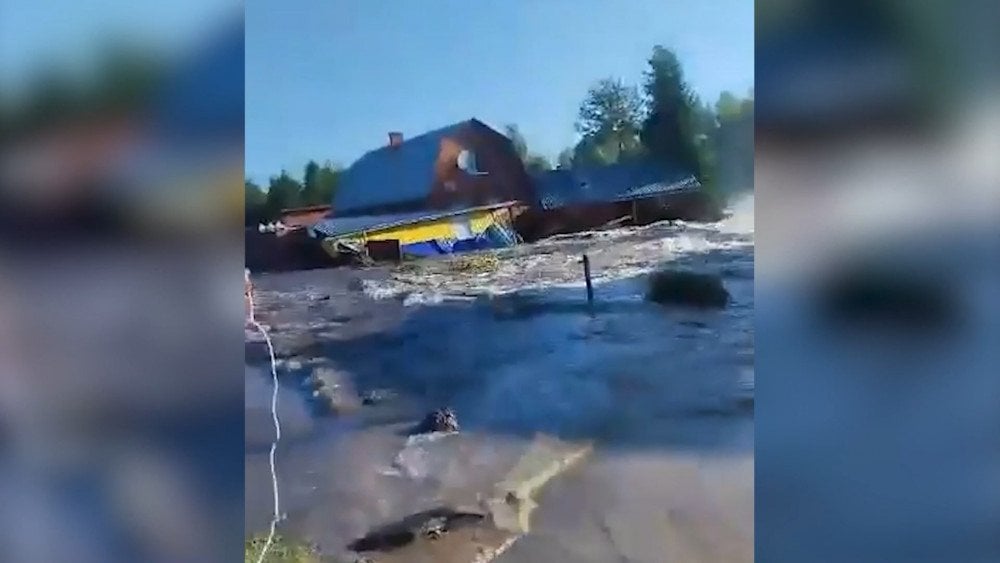
Raging water streams swept away houses in the Republic of Karelia, Russia
Local residents reported that it looked like a tsunami. Houses were swept away with people inside. As a result, 3 people died, and 10 were injured.
According to the Federal Agency for Sea and Inland Water Transport of the Russian Federation (Rosmorrechflot), the accident on the White Sea Canal in Karelia paralyzed navigation on the section between the White Sea and Vygozero.
In the past decade the world witnessed a rather strange situation. Despite the fact that climate catastrophes all over the world were getting worse and more frequent, in Russia and its neighboring countries everything was quite stable up to a certain point. Many people were happy about it, while others, especially experts, were perplexed.
However, since August 2023 everything began to change dramatically. And this is clearly confirmed by a selection of climatic events for just one week from July 24 to July 30, 2024, presented in this article. Moreover, this is only a small part of the dangerous weather events that occurred in Russia during this period.
The video version of the article will explain the reason for such a sudden change in climate disasters in this country.
Leave a comment